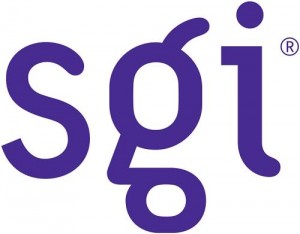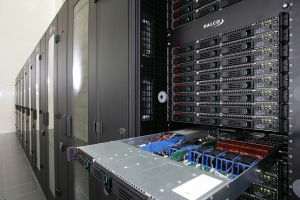A computer is an electronic device capable of processing data at blazing-fast speeds and storing massive amounts of information. A computer executes, at their lowest level, basic logic-arithmetic computations, but also performs move, copy and store operations. Such simple operations allow creating the complex programs and applications we use today.
Although computers execute rather simple operations, they process data by using a language that can be unintelligible for the average human. While people communicate through language symbols and decimal numbers, computers use the binary numeric system in order to execute all of the processing and storing operations. The binary system has only two symbols : 0 and 1. By using just those two symbols we can represent any numeric quantity or any symbol of any alphabet. It is clear that human beings are not able to directly understand binary machine language, for this reason it is necessary that computers convert their binary information into something humans can understand. The binary information is then converted by a computer into text, images, and sounds.
Now, let us put things into perspective. A latest generation mainstream computer is capable of performing operations at blazing-high speeds when compared to humans. For example, Let us consider a basic operation such as the addition of two 8-bit numbers -8-bits represents a number between 0 and 255 -. While an average human can spend between 2 to 5 seconds to obtain the result of such operation, a latest generation computer with a 3GHz CPU can obtain the same result in less than 0.33 nanosecods. This means that such computer is 15 million times faster than a human brain when performing logic-arithmetic operations.
But, how is it possible to achieve such overwhelming calculation speed? How do computers work? I will start by saying that such amazing processing speed can be achieved because computers are built using very fast electronic components that work using high frequency electrical signals. Such components have been in constant evolution since Jack Kilby created the first integrated circuit in 1959. Today, the most advanced components are capable of working at GHz frequencies.
When talking about computer, we may distinguish between two essential components: Hardware and Software. The hardware refers to the physical components of the machine, all the electro-mecanical parts that are in charge of the processing and data storing. For example: The Microprocessor, the main memory, storage devices, the power supply, input peripherals, output, peripherals, etc.
On the other hand, the software refers to the programs. Those that are in charge of controlling the hardware and giving essential instructions so we can do actual work in a computer. There are different types of software we can find, some examples are: The operative system, device drivers, office applications, etc.
In this website we will uncover what is under computer's hood and will delve into the details of hardware and software.
In don´t want to close this article without showing all the types of computers that exist. In the beginning of the computers era there were only massive electro-mechanical monsters that were built using vacuum tubes, and occupied entire rooms. It was with the invention of transistor and later the integrated circuit, that desktop and personal computers arised, followed by laptops and other mobile devices.
The types of computes we can find today are described as follows:
Supercomputers:
Those are the most massive and most powerful. Supercomputers have a processing power ranging the PetaFLOPS (a hundred trillion operations per second), they can fill entire rooms and consume huge amounts of power (in the order of KiloWatts). They are used mainly for research tasks such as simulation of complex physics and biological systems.
Servers:
Server computers hold an intermediate processing power. The main requirement for server applications is availability. For this reason they must use more reliable and durable components that the ones found in regular consumer PCs. Servers are used mainly to store data that needs to be accessed by multiple users through a network. Such a network may be a Local Area Network or the Internet itself.
Desktop Computers:
These are the regular computers that we use every day in our homes, our jobs, our university, etc. They are used for mainstream applications such as office work, games, graphic design, video editing, web browsing, video conferencing, chatting, etc.
Laptops y tablets:
The primary characteristic of a laptop is its ability to be carried wherever the user wants to go, this is defined as portability. In order to achieve a good degree of portability a computer must have reduced size and weight. In addition, they must have a good battery life and the ability to connect to wireless networks.
Tablets, on the other hand, are a variation from traditional laptops; the main difference is that tablets use touchscreens instead of physical keyboards. In general, tablets are considered devices with better portability features, because they are smaller, thinner, more lightweight, and have a much better battery life. However, the increased portability poses an important trade-off: A better portability implies, in general, reduced performance. For a given price range, a laptop tends to have less performance than a desktop computer, at the same time a tablet has way less computing capability and less functionality than a laptop.
Handheld Computers:
The main characteristic of such devices is that they can be held on the palm of a hand. The handheld devices find their main application as personal assistants/organizers. Today it is very difficult to find standalone handheld computers, however they can be widely found integrated 









